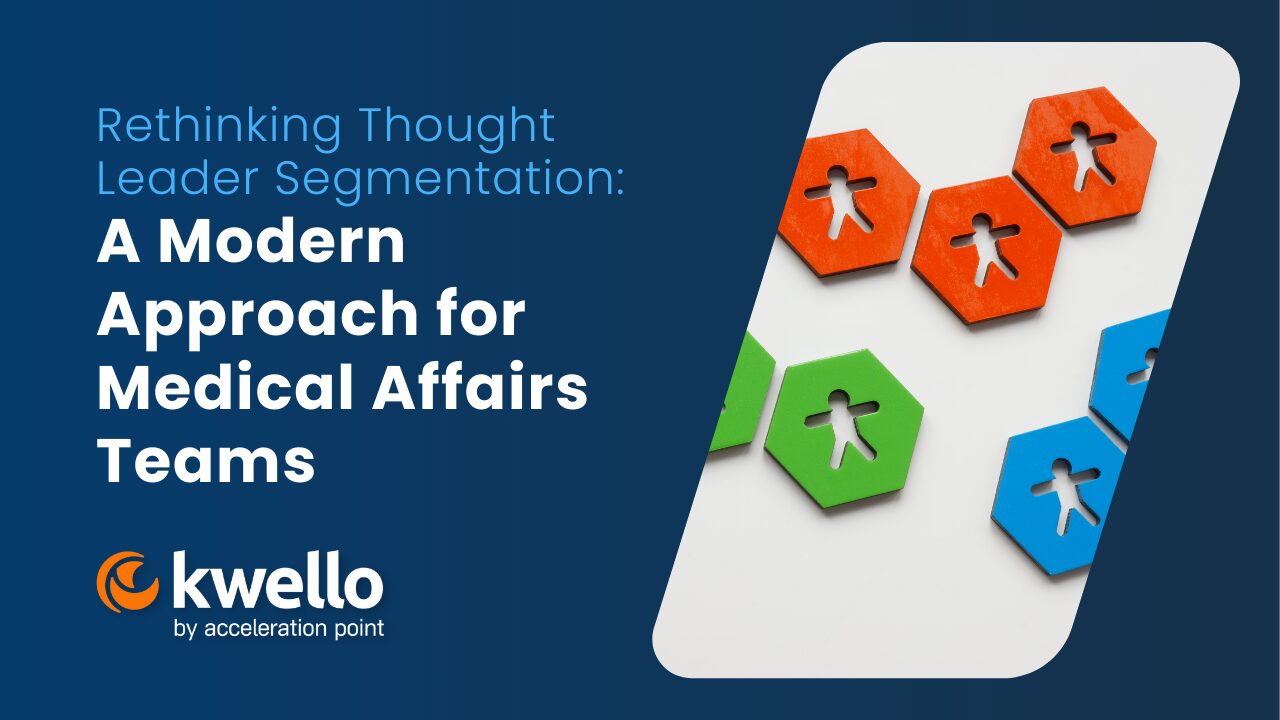As the landscape of healthcare changes, so too must the way field teams approach thought leader segmentation. While traditional methods have typically centered around an MSL engaging with a set number of KOLs, recent developments have shown that a more nuanced approach is necessary for success.
One major issue with current methods is that they are too heavily focused on defining global, regional, and local influence often driven by the process of calculating FMV to determine contracting rates. While this is still an important part of the contracting process, it alone is not adequate for helping field teams prioritize what to focus on. Modern field teams, on the other hand, start by clearly defining the tactics that the field team is going to deliver, based on the lifecycle of the treatment. This may include engaging with existing investigators or identifying new potential sites, supporting traditional key opinion leaders who disseminate evidence through publications and congress presentations, or engaging with digital opinion leaders to increase awareness through digital and social channels. Some are engaged with the payer community, patient organizations, and many other segments that require different tactics than the traditional thought leader.
By starting with the goals that must be achieved and clearly defining the tactics that the medical team can utilize to achieve them, modern teams have a foundation for truly meaningful segmentation. Once the tactics are aligned, various audiences or segments can be identified for engagement. Prioritization is critical because there will always be more members of the medical community that can be engaged than there is the capacity to engage. Capacity planning tools can help to define the bucket that can be filled, taking into account the 150 days each year that a typical member of the field team has to engage with the medical community.
Utilizing data to identify potential candidates for each segment is the next step. Scientific profiles containing publications and presentations can help identify KOLs with the most scientific influence, while other data can identify which institutions would most benefit from education programs. Social monitoring can help to identify which experts have the most significant scientific reach. Gathering input from local teams is also critical, as they have great insight into their medical communities and can help identify potential candidates and their interests.
Once prioritization is complete, it’s important to validate the segmentation by looking at the results by territory. This helps to ensure that resources are aligned with the prioritized segments and that opportunities are not left unattended. Finally, decisions can be automatically integrated into existing tools like CRM or global KOL planning solutions to keep the administrative burden on the field teams low and enable them to begin taking action.
At Acceleration Point, we have been helping field teams identify, prioritize, and segment the medical community with the services, tools, and support needed by field leaders to focus their team’s efforts on the best opportunities to achieve their strategic objectives. Our approach recognizes the need for a more nuanced and comprehensive method of thought leader segmentation. Contact us at accelerationpoint.com to learn more.

